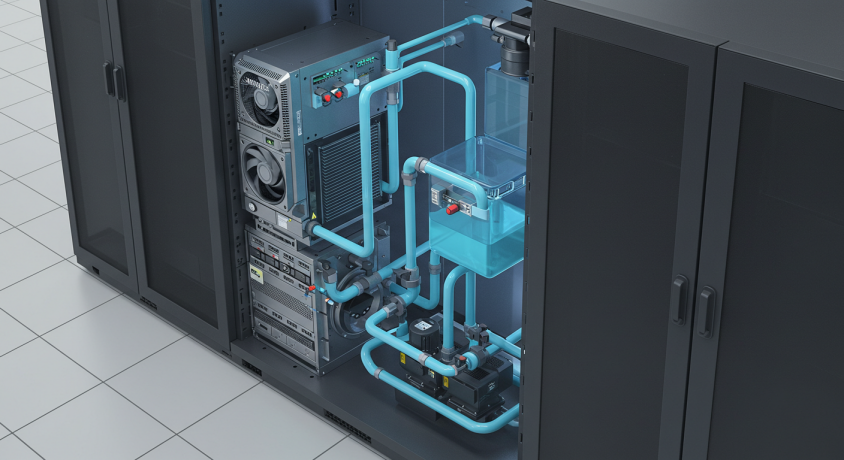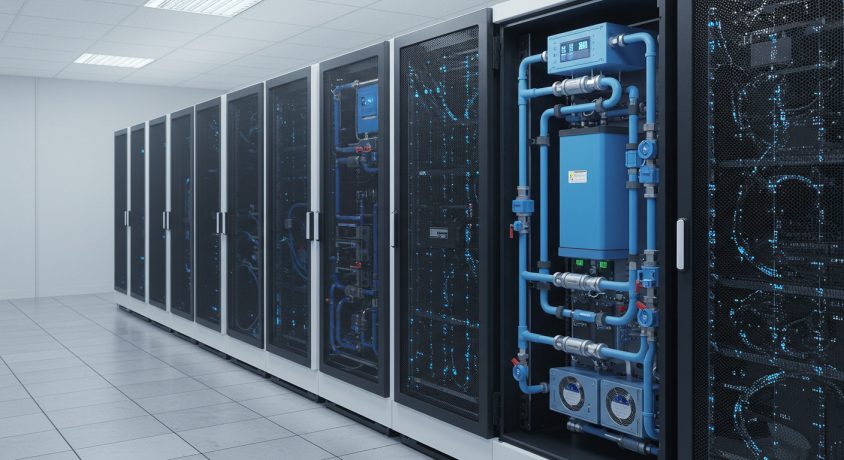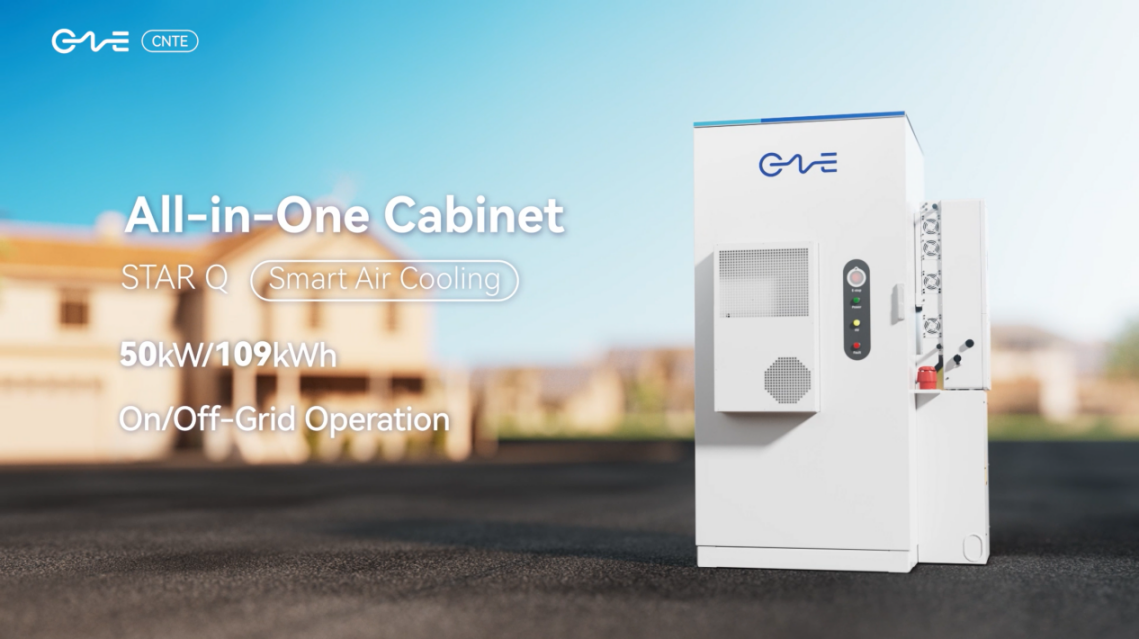Liquid-Cooling Cabinet Benefits & Performance
The Ultimate Guide to Liquid Cooling Cabinets: Efficiency and Benefits
Today Vitiation of heat within the servers and data centers that accommodate these devices has become a major concern due to the advancement in technology. In this article, we will focus on the liquid-cooled server cabinet and we will also get information about liquid-cooled high-density environments. Here, we begin with the classification of liquid-cooling cabinet and continue with their advantages and areas of usage.
What is a Liquid-Cooling Cabinet?
A liquid-cooling cabinet is a sophisticated cooling mechanism that employs liquid for handling and cooling the heat from IT equipment like servers, racks, and high-performance computing systems. It has been widely adopted in today’s data centers because of its efficiency, and suitability in cooling dense equipment. These types of cabinets are intended for cooling components, processors, or memory chips so that businesses can overload their hardware without any concern for heating issues. Liquid-cooled server cabinets or liquid cooling enclosures can be effective in meeting the present and future requirements of modern data centers, artificial intelligence applications, gaming computers, and more.
Revolutionary Liquid-Cooling Cabinets for Data Centers and High-Performance Computing
Businesses are facing an increasing threat of heat dissipation in today’s high-demand computing environment and liquid cooling cabinets are becoming a new trend nowadays. The liquid-cooled server cabinet still provides the best performance to date and is efficient; this makes it a significant device for today’s data centers, High-performance computing (HPCs), and industries sector.
Seamless Cooling for High-Density Environments
As the name implies, liquid cooling enclosures provide better heat transfer than ordinary enclosures with air cooling. It incorporates the efficiency of direct-to-chip cooling whereby the coolant is taken directly to the critical component to enhance the cooling process and avoid system failure. For the high-density server, a liquid-cooling rack provides an efficient way to address the issues of HVAC due to heat produced in new processors and is effective as a cooling method in high-density workloads.
Superior Efficiency and Performance
Modern liquid cooling cabinet is far from being just a cooling solution; they affect the efficiency of power consumption in data centers on the whole. As such, their application presents energy-saving liquid-cooled cabinets to replace energy-consuming air-cooling systems. Scalable liquid cooling cabinets also enable the expansion of infrastructure without having to re-design the cooling systems, allowing it to be perfect for rapidly growing data centers or server farms.
Built for Durability and Reliability
Durability and safety are the two attributes that are common when it comes to liquid-cooling cabinets. These are highly technology-specific cabinets with material technology and self-cooling properties that keep the critical infrastructure running in severe conditions. Cooling can be integrated either in a free-standing liquid cooling cabinet or as a rack-mounted liquid cooling system; reliability is not a question.

The Future of Cooling Technology
In future developments that will drive computation in industries further to meet higher server density and performance needs, liquid-cooled data center cabinets will be inevitable. Since a modular liquid cooling cabinet is one type of cooling equipment or system that is designed to hold a number of components, it can be appropriate to always prepare for the future when planning the cooling solutions of a business, and that is why they are considered to be cost-effective cooling solutions for companies.
How Does Liquid Cooling Work in a Cabinet?
There are several cooling techniques put into practice in liquid cooling cabinets and some of them include:
Direct-to-chip cooling:
It calls the liquid coolant to flow directly on the hardware to cool the hardware directly.
Immersion cooling:
Thereby, components are surrounded by non-conductive liquid for enhancing the dissipation of heat.
Two-phase cooling:
Both liquid and gaseous phases are interused to enhance the cooling process of the hardware.
Microchannel cooling:
Small channels are provided within components for the flow of such liquid to allow heat exchange as required.
Benefits of Liquid Cooling Cabinets
Air cooling has many disadvantages compared to liquid cooling, and that is why many specialists recommend using liquid cooling cabinets. Here is a list of some of the benefits that are as follows:
High Efficiency and Performance Optimization
Compared to air cooling, liquid cooling is several times more effective when it comes to heat dissipation. This results in a lower power density and thus higher efficiency and higher operation stability especially for high-density applications such as AI data centers.
Energy Saving and Cost Effectiveness
As mentioned liquid cooling systems are better and hence they take less power to cool the same system as air systems. This leads to less consumption of electricity when it comes to the bills thereby making the data center an environmentally friendly place.

Silent Operation
The silent liquid cooling cabinets, on the other hand, do not make use of noisy fans and cooling systems as is the case with the air-cooled systems. This is especially suitable for environment that requires minimal noise interference such as workplaces, research facilities, or computer data processing laboratories.
Improved Reliability and Hardware Lifespan
Thanks to liquid cooling racks, the dissipation of heat is effective and prevents hardware from getting hot. Thus, your equipment usage is made more efficient and the equipment lifespan is extended as their deterioration is avoided.
Space-saving Design
A higher cooling efficiency of liquid cooling cabinets helps in accommodating a larger amount of equipment in a smaller area. This is well useful in environments that require multitudes of servers hence increase in facilities can be achieved without the physical expansion of the room.
How to Choose the Best Liquid Cooling Cabinet?
When selecting a liquid cooling cabinet there are some factors that have to be taken into consideration:
Cooling Capacity and Efficiency
The principal factor that is addressed using a liquid cooling system is heat solution. Make sure that the cabinet that you settle for provides the cooling necessary for the type of equipment that you intend to use.
Compatibility with equipment
Make sure that the liquid cooling cabinet is integrated into the current infrastructure of your business. Such as modular liquid cooling cabinets enable one to create additional space for components if one is needed.
Scalability and Upgradability
If your growth is expected to increase in the future, it is best that you invest in liquid cooling cabinets that are expandable. All of these cabinets are intended to provide extra utilities and to manage higher heat loads over time.
Cost and Energy Savings
Although it is true that the initial costs involved in the implementation of liquid cooling solutions are higher than traditional air and fan-based cooling systems, there are long-term benefits which include lower energy consumed and less maintenance costs.
Maintenance and Care for Liquid Cooling Cabinets
Maintenance procedures for liquid-cooled cabinets are less frequent than air systems, but they are still necessary in order to avoid this kind of situation Wherever liquid-cooled systems are used, these several recommendations have to be made: Make sure the correct levels of coolant are reached and the ways, means of detecting leakage is functional to prevent damages. Monitoring of control systems and the cleaning of heat exchangers at certain intervals will enhance the efficiency of the system.
Conclusion
As the data center, server, and high-performance computing systems continue to develop the same applies to the cooling solutions. Liquid-cooled cabinets is one of the most advanced, efficient, and performance-oriented inventions in the market. Regardless of whether it is a data center, high-performance computing, or a gaming computer you want to upgrade, a liquid cooling rack or a liquid cooling server cabinet will assist in attaining the most effectively as well as have relatively low energy consumption and none or minimal heat-related problems.





